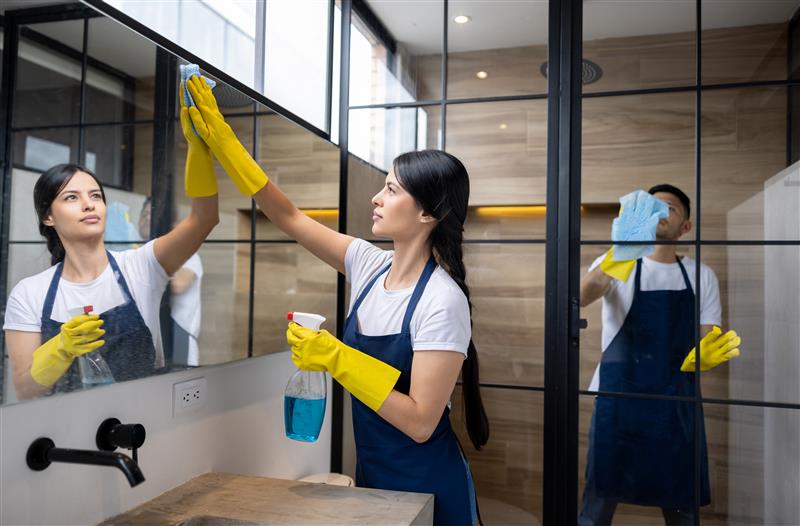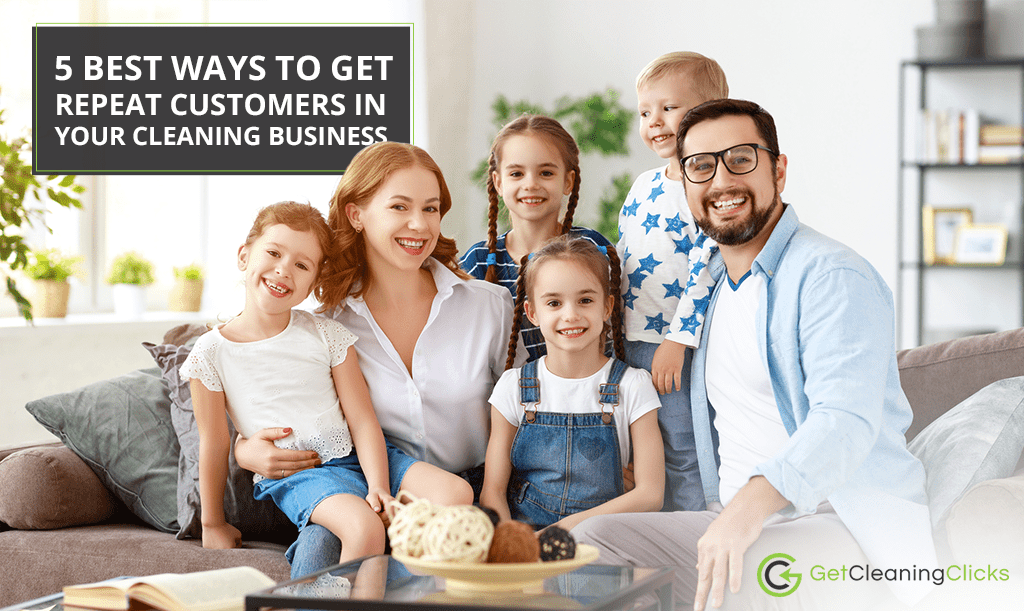How to get more clients for cleaning business? This question plagues many entrepreneurs in the cleaning industry. Securing a steady stream of clients is crucial for success, and it requires a multi-faceted approach. This guide delves into proven strategies, from optimizing your online presence and leveraging local marketing techniques to providing exceptional customer service and crafting competitive pricing packages. We’ll explore how to identify your target market, tailor your marketing efforts accordingly, and build lasting relationships with clients who value your services.
By understanding your ideal customer, building a strong online presence, and implementing effective local marketing strategies, you can significantly increase your client base. This involves not only attracting new customers but also fostering loyalty among existing clients through exceptional service and competitive pricing. This guide provides a comprehensive roadmap to achieving sustainable growth in your cleaning business.
Understanding Your Target Market

Defining your target market is crucial for effective marketing and client acquisition in the cleaning business. By focusing your efforts on specific customer segments, you can tailor your services and messaging to resonate more effectively, leading to higher conversion rates and increased profitability. Ignoring this step often results in wasted marketing spend and a diluted brand message.
Three Distinct Customer Segments for Cleaning Businesses
Identifying three distinct customer segments allows for a more precise approach to marketing and service delivery. This segmentation allows for the development of targeted strategies that resonate with each group’s unique needs and preferences, maximizing the return on investment for marketing efforts. Failing to segment the market can lead to generic messaging that fails to capture the attention of any specific group.
- Residential Clients (Busy Professionals): This segment comprises individuals or couples with demanding careers, limited free time, and a desire for a clean and organized home. They value convenience, reliability, and efficiency above all else. They are often willing to pay a premium for a high-quality service that saves them time and effort.
- Residential Clients (Families with Children): This segment includes families with young children, prioritizing thorough cleaning, particularly in high-traffic areas like kitchens and bathrooms. They might be more price-sensitive than busy professionals but value a trustworthy and child-safe cleaning service. They may require more flexible scheduling options to accommodate their family’s needs.
- Commercial Clients (Small Businesses): This segment consists of small businesses, such as offices, retail stores, or restaurants, requiring regular cleaning services to maintain a professional image and hygienic environment. They focus on cost-effectiveness, reliability, and the ability to schedule cleaning outside of business hours to minimize disruption.
Ideal Customer Profiles
Developing detailed ideal customer profiles (ICPs) for each segment helps to refine your marketing efforts and ensures your resources are used efficiently. These profiles go beyond basic demographics and delve into the psychographics of your target audience.
- Busy Professionals: Age 30-55, high income, dual-income households, often live in urban areas, value convenience and time-saving services, prioritize deep cleaning of key areas (bathrooms, kitchens), may use online booking platforms and appreciate quick communication.
- Families with Children: Age 25-45, varied income levels, prioritize safety and hygiene, need flexible scheduling, focus on thorough cleaning of high-traffic areas and child-friendly spaces, may rely on word-of-mouth referrals and community recommendations.
- Small Businesses: Business owners aged 30-60, focus on cost-effectiveness and efficiency, require reliable and consistent cleaning, prioritize a professional and discreet service, value detailed service agreements and clear communication, often seek online reviews and testimonials.
Marketing Strategies for Each Segment
Marketing strategies must be tailored to the specific needs and preferences of each customer segment to achieve maximum impact. A generic approach will likely yield poor results.
- Busy Professionals: Target through online advertising (Google Ads, social media ads targeting professionals), highlight convenience and time-saving aspects, emphasize premium services and quick booking options, utilize professional-looking website and marketing materials.
- Families with Children: Focus on local marketing (community events, flyers in family-oriented areas), emphasize safety and child-friendly practices, offer flexible scheduling options, utilize testimonials from other families, build relationships with local schools or daycare centers.
- Small Businesses: Target through business networking events, online directories (Yelp, Google My Business), highlight cost-effectiveness and reliability, provide detailed service agreements and quotes, emphasize professional image and discreet service, utilize case studies and testimonials from other businesses.
Optimizing Your Online Presence

A strong online presence is crucial for attracting new cleaning clients. Your website and social media profiles are your digital storefront, showcasing your services and building trust with potential customers. A well-optimized online strategy will significantly improve your chances of securing more bookings. This involves crafting compelling content, designing a user-friendly website, and consistently engaging with your target audience.
Compelling Service Descriptions
Crafting compelling descriptions of your cleaning services is paramount. Go beyond simply listing what you do; highlight the benefits customers receive. For example, instead of saying “We clean houses,” try “We transform cluttered homes into sparkling sanctuaries, leaving you with more time to enjoy life.” Your unique selling propositions (USPs) should be clearly emphasized. These might include eco-friendly cleaning products, specialized services (like carpet cleaning or window washing), guaranteed satisfaction, or exceptionally fast turnaround times. These USPs should be woven throughout your website copy and social media posts, reinforcing your brand identity and setting you apart from competitors. Consider using strong action verbs and focusing on the positive outcomes your services provide.
Website Design and Calls to Action
Your website should be simple, intuitive, and easy to navigate. Potential clients shouldn’t have to hunt for information; essential details like service areas, pricing (or a clear path to obtain a quote), and contact information must be readily available. High-quality images of your work are also crucial. Include clear and prominent calls to action (CTAs). Instead of vague buttons, use phrases like “Get a Free Quote Now,” “Book Your Cleaning Today,” or “Schedule a Consultation.” These CTAs should be strategically placed throughout your website, guiding users toward the desired action. Consider using contrasting colors to make them stand out. A well-structured website with a mobile-responsive design ensures accessibility across all devices.
Social Media Content Calendar and Before-and-After Photos
A consistent social media presence is vital for building brand awareness and attracting new clients. Develop a content calendar to schedule regular posts, including high-quality before-and-after photos of your cleaning work. For example, a post could feature a photo of a cluttered kitchen with the caption: “This kitchen was overwhelmed with dishes and clutter. See the transformation in the next image!” The following image would showcase the same kitchen, sparkling clean and organized, with a caption like: “Our team expertly cleaned and organized this kitchen, leaving it spotless and ready for use. Contact us today for a free quote!” This approach visually demonstrates the value of your services. Vary your content with informative posts, behind-the-scenes glimpses of your team, and engaging questions to foster interaction.
Displaying Customer Reviews and Testimonials
Positive customer reviews build trust and credibility. Showcase these reviews prominently on your website and social media profiles. Use an HTML table to present them in a visually appealing and easily digestible format.
| Review | Reviewer |
|---|---|
| “The team at [Cleaning Company Name] was incredibly professional and efficient. My house has never looked so clean! Highly recommend!” | Jane Doe, Anytown, USA |
| “I was so impressed with the attention to detail. They went above and beyond to make sure everything was perfect. Five stars!” | John Smith, Springfield, USA |
Remember to always obtain permission before using customer testimonials.
Leveraging Local Marketing Strategies
Building a successful cleaning business requires a robust marketing strategy that extends beyond online presence. Local marketing plays a crucial role in connecting directly with potential clients within your community, fostering trust, and driving consistent growth. By strategically implementing targeted local strategies, you can significantly increase your client base and build brand recognition within your service area.
Targeted Flyer and Brochure Distribution
Effective flyer and brochure distribution involves more than simply scattering leaflets. A strategic approach requires identifying high-traffic areas frequented by your ideal customer profile. Consider locations like community centers, laundromats, grocery stores, and even local businesses that complement your services. The design of your marketing materials should be visually appealing, clearly communicate your value proposition (e.g., eco-friendly products, specialized services, competitive pricing), and include a clear call to action (e.g., website URL, phone number, QR code). Furthermore, consider the timing of your distribution; weekends and evenings often yield higher visibility in high-traffic areas. Tracking the effectiveness of your distribution through unique offers or promotional codes on your flyers can provide valuable insights for future campaigns.
Referral Program Design and Implementation
Implementing a referral program incentivizes your existing satisfied clients to become brand ambassadors. This leverages the power of word-of-mouth marketing, which is often highly effective in local communities. A successful referral program requires offering compelling rewards. Consider options like discounts on future services (e.g., 10% off their next cleaning), gift cards to local businesses, or free add-on services (e.g., a complimentary window cleaning). Make the referral process simple and straightforward. Provide clients with easy-to-share referral links or codes, and clearly Artikel the reward structure. Publicly acknowledging and thanking referrers through social media or email can further strengthen the program’s effectiveness. For example, a simple “Refer a friend and get 10% off your next clean!” campaign can significantly boost referrals.
Strategic Partnerships with Local Businesses
Collaborating with complementary local businesses can unlock significant lead generation opportunities. Real estate agents and property managers are ideal partners for cleaning businesses. They regularly interact with individuals and families needing cleaning services for move-in/move-out preparations, property maintenance, or ongoing cleaning. The benefits include access to a pre-qualified audience and increased brand visibility within the real estate sector. However, drawbacks may include potential competition among cleaning services offered through the partnership, or the need to negotiate commission structures. A well-defined partnership agreement outlining responsibilities, compensation, and exclusivity terms is crucial for a successful collaboration. Consider offering real estate agents a commission on each client referred, or providing discounted services for their clients as a promotional offer.
Local Community Event Participation
Participating in local community events and organizations presents valuable networking and marketing opportunities. This could involve sponsoring local events, setting up a booth at farmers’ markets or community fairs, or offering your services to local charities or non-profit organizations. These events provide a platform to directly interact with potential clients, showcase your services, and build brand awareness within the community. Networking with local business owners and community leaders can also lead to valuable referrals and partnerships. For instance, sponsoring a local school fundraiser or offering a discounted cleaning service to a local charity could generate positive publicity and build goodwill within the community.
Providing Exceptional Customer Service

Exceptional customer service is the cornerstone of a thriving cleaning business. Happy clients not only return for repeat business but also act as powerful advocates, recommending your services to their network. A well-defined customer service protocol, proactive feedback collection, and effective complaint resolution are key to building lasting client relationships and driving sustainable growth.
Customer Service Protocol, How to get more clients for cleaning business
A robust customer service protocol ensures consistency and professionalism in all client interactions. This protocol should cover all aspects of the cleaning process, from initial contact to post-service follow-up. Key elements include clear communication channels (phone, email, text), prompt response times (aiming for within 24 hours), and consistent service delivery adhering to pre-agreed specifications. For example, a standardized checklist ensures every cleaning is thorough and consistent, minimizing potential issues and client dissatisfaction. Pre-service communication clarifying expectations regarding specific cleaning tasks, timeframes, and any potential disruptions is also crucial. Post-service follow-up, perhaps a simple text message asking for feedback or confirming satisfaction, reinforces professionalism and client appreciation.
Collecting and Responding to Customer Feedback
Regularly soliciting and responding to customer feedback is essential for continuous improvement. This can be achieved through various methods: post-service surveys (email or online forms), feedback cards left at the client’s premises, and direct requests for feedback during or after the service. Analyzing feedback helps identify areas of strength and weakness, informing service adjustments and process improvements. Prompt responses to all feedback, whether positive or negative, demonstrate your commitment to client satisfaction. Positive feedback should be acknowledged with gratitude, while negative feedback should be addressed with empathy and a commitment to resolution. For example, a system could be implemented where all feedback is logged, categorized (e.g., positive, negative, suggestions), and assigned to specific team members for response and action.
Handling Complaints Professionally and Effectively
Handling complaints professionally and effectively is crucial for damage control and maintaining client relationships. Active listening is paramount; allow the client to fully express their concerns without interruption. Acknowledge their feelings and validate their experience. Once the complaint is understood, offer a sincere apology, even if the issue wasn’t entirely your fault. This demonstrates empathy and a commitment to resolution. Then, propose a solution, whether it’s a partial refund, a free cleaning of the affected area, or a revised cleaning plan. Document the entire complaint handling process for future reference and improvement. For instance, a detailed record of the complaint, the proposed solution, and the outcome should be kept for analysis and to prevent similar issues from recurring.
Building Rapport and Fostering Long-Term Relationships
Building rapport with clients is about more than just providing a clean home; it’s about building a personal connection. This involves remembering client preferences, engaging in friendly conversation (while respecting boundaries), and showing genuine interest in their lives. Small gestures like remembering birthdays or offering special discounts for repeat clients can go a long way in fostering loyalty. Regular communication, even outside of service appointments, keeps your business top-of-mind. For example, sending a holiday greeting card or sharing helpful cleaning tips via email can strengthen the client relationship. By prioritizing client relationships, you cultivate a loyal customer base that provides consistent revenue and positive word-of-mouth referrals.
Pricing and Packages: How To Get More Clients For Cleaning Business
Strategic pricing is crucial for attracting a diverse clientele and ensuring profitability in the cleaning business. A well-structured pricing model caters to various budgets and service needs, maximizing revenue while maintaining competitiveness. Understanding your costs, market rates, and client expectations are key to creating a pricing strategy that works.
Pricing structures should be transparent and easily understood by potential clients. Clearly defined packages, encompassing various services at different price points, allow customers to choose the option best suited to their requirements and budget. This approach simplifies the sales process and minimizes misunderstandings.
Pricing Package Examples
The following table illustrates example pricing packages for various cleaning services. Remember to adjust these prices based on your local market, operational costs, and the level of service you provide.
| Service | Description | Price | Add-ons |
|---|---|---|---|
| Basic Cleaning | Dusting, vacuuming, mopping, kitchen and bathroom cleaning (standard) | $75 | Interior window cleaning (+ $25), Oven cleaning (+ $30) |
| Deep Cleaning | Basic cleaning + thorough cleaning of appliances, grout, and baseboards | $125 | Carpet cleaning (+ $50/room), Upholstery cleaning (+ $40/piece) |
| Move-In/Move-Out Cleaning | Thorough cleaning of entire property, including appliance cleaning and detailed attention to fixtures | $200+ (based on square footage) | Refrigerator cleaning (+ $35), Pantry organization (+ $45) |
| Post-Construction Cleaning | Removal of dust, debris, and protective materials from a newly constructed or renovated property | $300+ (based on square footage and complexity) | Specialized equipment cleaning (+ $50) |
Justifying Pricing and Highlighting Value
Clearly communicating the value proposition is essential. Don’t just state the price; explain what the client receives for that price. Highlight the quality of your cleaning products, your experienced and trained staff, and the time-saving benefits of hiring your service. Consider offering guarantees, such as a satisfaction guarantee or a re-cleaning guarantee, to build trust and demonstrate your commitment to quality. You can also emphasize your eco-friendly practices or use of specialized equipment as value-added features.
For instance, instead of simply stating “Deep Cleaning – $125,” you could say: “Our Deep Cleaning service ($125) includes a thorough cleaning of your entire home, using eco-friendly products and our team of experienced cleaners. We’ll tackle tough grime in your kitchen and bathrooms, ensuring sparkling results. This service saves you hours of tedious work, allowing you to enjoy your free time.”
Structuring Pricing for Wide Client Reach and Profitability
A tiered pricing structure, as shown in the table above, effectively caters to diverse needs and budgets. Offering various packages ensures that clients can find a service that fits their needs and spending capacity. Consider offering discounts for recurring services or bundled packages to incentivize repeat business and increase profitability. Analyzing your cost structure and setting a competitive yet profitable price point for each package is crucial for long-term success. Regularly review your pricing to ensure it remains competitive and aligns with market trends and your operational costs. This dynamic approach allows for adjustments based on demand, seasonality, and changes in the cost of goods and services.






